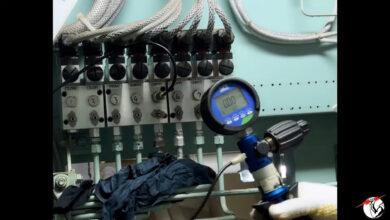Is Your Pump Trying to Tell You Something? Here’s How to Listen
Operational Checks on a Centrifugal Pump: A Sailor’s Guide to Not Getting Fired 🚢
So, you’ve been tasked with checking a centrifugal pump onboard a ship. Sounds thrilling, right? Almost as exciting as watching paint dry—or maybe even the thrilling chase of a turtle race. 🐢 But hey, you’re here to make sure the ship doesn’t turn into a giant water fountain, so let’s dive into the must-dos with a splash of sarcasm and, of course, safety.
Step 1: Inspect the Rotating Shaft
Ah, the spinning wonder of the pump!
- What to do: Check the seal area for any leaks. Yes, leaks. Those little drips that scream, “Fix me before I flood the engine room!”
- Also: Look out for vibrations or abnormal noises. If it sounds like a haunted washing machine, you’ve got a problem.
Pro Tip
Ignore these checks, and you’ll get a nice lesson in cleaning up seawater. 🫧 Good luck explaining that to the chief engineer.
Step 2: Check the Drain Pipe
This is where the pump tattles on itself.
- If your seal is leaking, water will drip into the drain tank. Simple? Sure. But ignoring it? Bold move. 💧
- Look for evidence of a leak—a little water here isn’t a decorative feature, FYI.
Step 3: Foundation Mark
The foundation mark should be intact, not sort-of-there or kind-of-crooked.
- If the foundation moves, guess what else moves? Everything. Now you’ve got a whole new set of problems, and none of them are fun.
Step 4: Guard Tightness
That protective guard over the pump shaft? It’s not just for show.
- Make sure it’s tight. Loose guards aren’t just annoying; they’re dangerous. Plus, getting yelled at for “negligence” doesn’t make for a great day.
Step 5: Drain Pot Investigation
Find water in the drain pot? Congratulations! Your seal is leaking. 🚨
- Bonus points if you notice salt deposits near the gland seal. That’s like your pump leaving breadcrumbs for you to follow. Spoiler: the trail ends at “Fix this leak.”
Common Mistakes
- Ignoring the Noise:
“What’s that weird sound?” you ask, as you casually stroll past. Next thing you know, the pump’s on strike. - Skipping the Guard Check:
Let’s call this what it is: laziness. Unless you’re aiming for a new nickname, like “Accident-Prone Alex,” just tighten the guard. - Trusting the Pump Too Much:
Pumps are like toddlers—they can’t be left unsupervised.
Conclusion: Your Golden Checklist
Next time you’re wandering the engine room, remember: centrifugal pumps aren’t just there to look pretty. They’re the backbone of your operations, and they demand your attention.
So, do the checks, tighten the guards, and stop pretending that suspicious noise doesn’t exist. Or don’t—and start practicing your damage control skills. 🎭
Got questions, comments, or confessions about ignoring these steps? Drop them in the comments below. I’m sure Sailor Basha would love to tell you, “I told you so!” 🛳️






